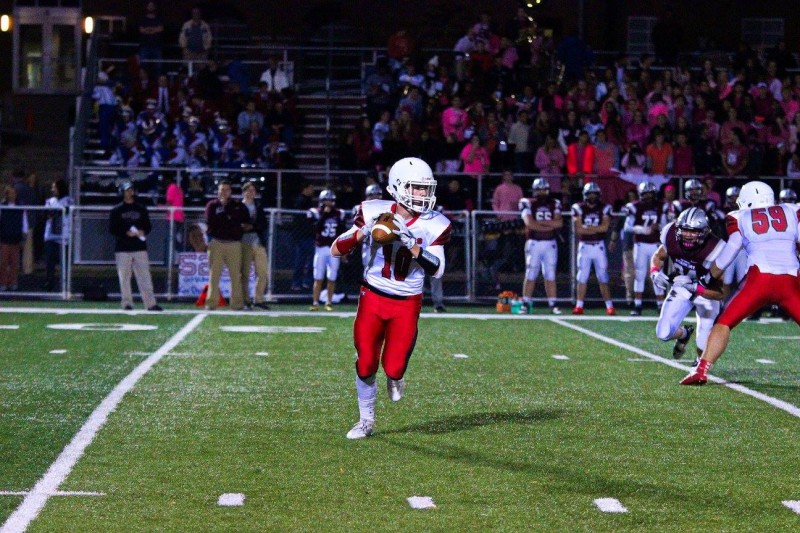
Much of the focus on the increased energetic demands of gridiron football has (rightfully) been placed on the rate of play calling and the limits of substituting fatigued players. These factors are the result of the no-huddle, up-tempo style of offense. Compared to huddle-based approaches with multiple checks and adjustments, up-tempo play calling can strip ten or twenty seconds of rest for football players, with most of the burden falling on defenders and the collective greater energetic demands of their positions. When an offense refuses to huddle or substitute players, athletes on both sides of the ball play more downs, building on the fatigue of up-tempo play calls. When combined over the course of a game, the accumulation of an extra dozen plays brought about by these two strategies can leave players gasping and more prone to mental and technique errors. Because offensive players are discouraged by various rules from pursuing runners, defenders are impacted most by the additional demands.
WATCH: Is GPP Actually Important?
Though it doesn’t get as much attention, the plays themselves are changing in a way that heightens these energetic demands, and again the brunt is born by defenders. While not quantified by tracking data, a few trends seem to be adding to the mileage covered by football players on game day.
Here are a few that jumped out at me:
Spread Formations
Spread formations are as old as football; while today’s pro game is being defined by spread teams, before the recent resurgence spread formations won the LA Rams an NFL championship in 1951. Spread formations (i.e., formations that emphasize putting offensive players at or near the line of scrimmage), do two interesting things. First, they put ball carriers in space, meaning that runners have more room to maneuver and that defenses have to match that maneuvering. This also means missed tackles are more likely, which can increase the length of activity during the play. It’s no secret that open-field tackling is much harder than the phone booth fights common in the days of I-formation football, when tackles were consistently made on either side of cramped gaps.
Second, spread formations increase the distance supporting defenders have to cover when converging on ball carriers. A school playing a Baylor-style scheme, for instance, might have its cornerbacks nearly pressed to the sidelines by the offense’s huge receiver splits. Every time those corners come up in run support or to make a tackle, they’re covering nearly as much yardage as the dimensions of the field will allow.
Edge Running
With wider formations comes wider running. Whether the revitalized buck sweep, packaged concepts that substitute quick screens and hitches for the run game, or rocket/jet actions, more and more teams look at the alley as the key to gaining yards. These plays not only force the defense to laterally cover more ground, but often do so at a more rapid pace. Some teams have eschewed the interior run game as anything more than a “keep defenses honest” gambit, and instead choose the off-tackle and alley game as their primary targets.
The Mobile Quarterback
As mentioned above, open-field tackling is tough, and very often a quarterback who is running—whether as a designed play or on a scramble—is in the open field. Again, this is another example of the offense taking on an energetic burden (asking a position once known for standing still in a defined patch of grass to become a primary run threat) in order to provoke the defense into taking on an even larger burden (asking 11 defenders to chase down that quarterback).
The Option and Contralateral Pursuit
Another old tool brought back as a staple, the option does some interesting things with movement. Most interesting to me is the idea of failed pursuit, and it’s most visible when the mesh option is paired with zone-style run-blocking. Both play-action passes and throw-back plays can cause a defense to waste energy on false steps, but they’re limited: play-action passes only waste a step or two, and throw-backs are too risky to be offensive staples. Compare that with plays like the zone read and the Run/Pass Option: both can demand that a defense commit to its run fits—up to and including engaging blockers—then suddenly make it retrace the entire route. With the zone read, the quarterback run routinely drags the defense back in the opposite side of its pursuit, while an RPO can force defenders to turn around and regain yards of lost depth.
Deep Passing
Though the deep ball has always been a part of the game, it was never a prominent portion; deep balls were for late game heroics or changes of pass, not a consistent part of the game plan. That’s changed in large part because of Air Raid-style offenses, and in particular to efforts by Mike Leach to make vertical passes as routine as handoffs. Continually sprinting twenty or thirty yards downfield on fly routes is a huge stressor for both receivers and defensive backs — so stressful, in fact, that it’s becoming common for offensive coaches to tell their players not likely to get the ball to run their routes at 70-80% of their top speed in order to conserve energy.
One last note is that any effect found on game day will be far stronger on the practice field, where these schemes and techniques must be rehearsed to sharp execution and likewise rehearsed against. As digital player tracking becomes more prevalent in the game, it’ll be interesting to see what the data says about all this extra effort and the impact it has on athletes.
Image courtesy of Chris Whitacre











